Abstract
Bacillus cereus UW85 produces a novel aminopolyol antibiotic, zwittermicin A, that contributes to the ability of UW85 to suppress damping-off of alfalfa caused by Phytophthora medicaginis. UW85 produces a second antibiotic, provisionally designated antibiotic B, which also contributes to suppression of damping-off but has not been structurally defined yet and is less potent than zwittermicin A. The purpose of this study was to isolate genetically diverse strains of B. cereus that produce zwittermicin A and suppress disease. We found that most isolates of B. cereus that were sensitive to phage P7 or inhibited the growth of Erwinia herbicola produced zwittermicin A; therefore, phage typing and E. herbicola inhibition provided indirect, but rapid screening tests for identification of zwittermicin A-producing isolates. We used these tests to screen a collection of 4,307 B. cereus and Bacillus thuringiensis isolates obtained from bacterial stock collections and from diverse soils collected in Honduras, Panama, Australia, The Netherlands, and the United States. A subset of the isolates screened by the P7 sensitivity and E. herbicola inhibition tests were assayed directly for production of zwittermicin A, leading to the identification of 57 isolates that produced zwittermicin A; 41 of these isolates also produced antibiotic B. Eight isolates produced antibiotic B but not zwittermicin A. The assay for phage P7 sensitivity was particularly useful because of its simplicity and rapidity and because 22 of the 23 P7-sensitive isolates tested produced zwittermicin A. However, not all zwittermicin A-producing isolates were sensitive to P7, and the more labor-intensive E. herbicola inhibition assay identified a larger proportion of the zwittermicin A producers.(ABSTRACT TRUNCATED AT 250 WORDS)
Full text
PDF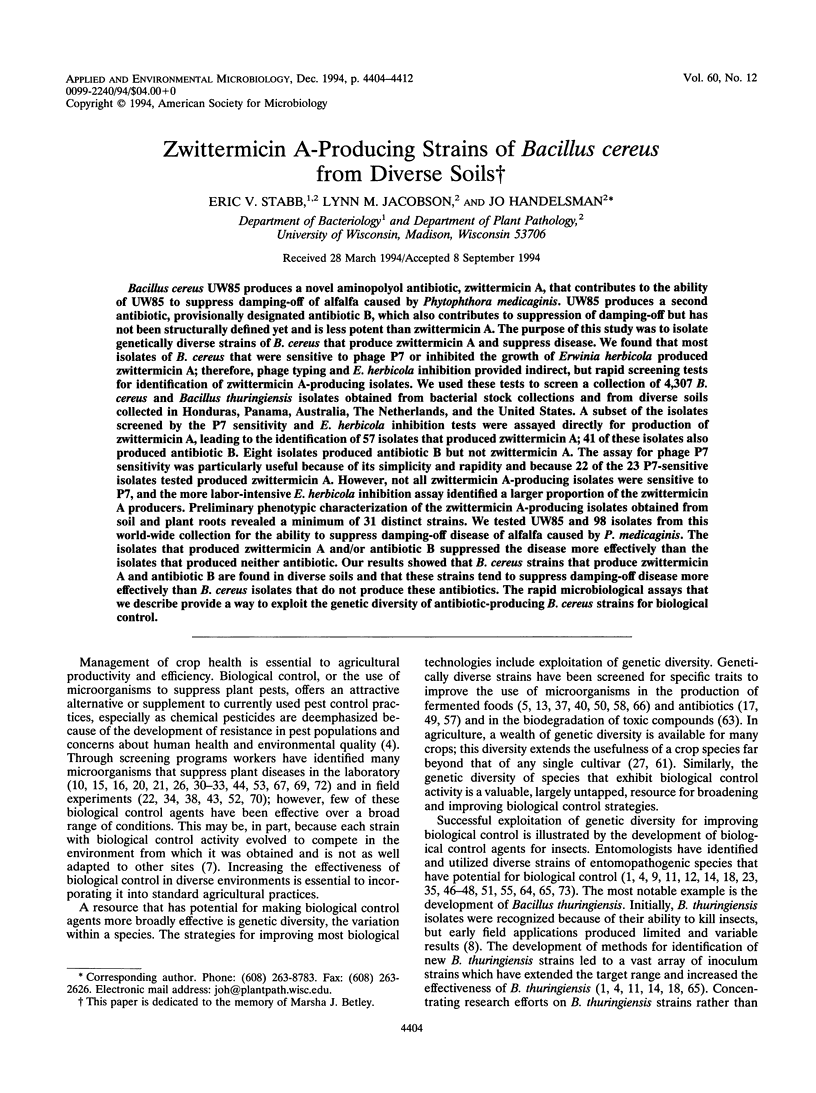
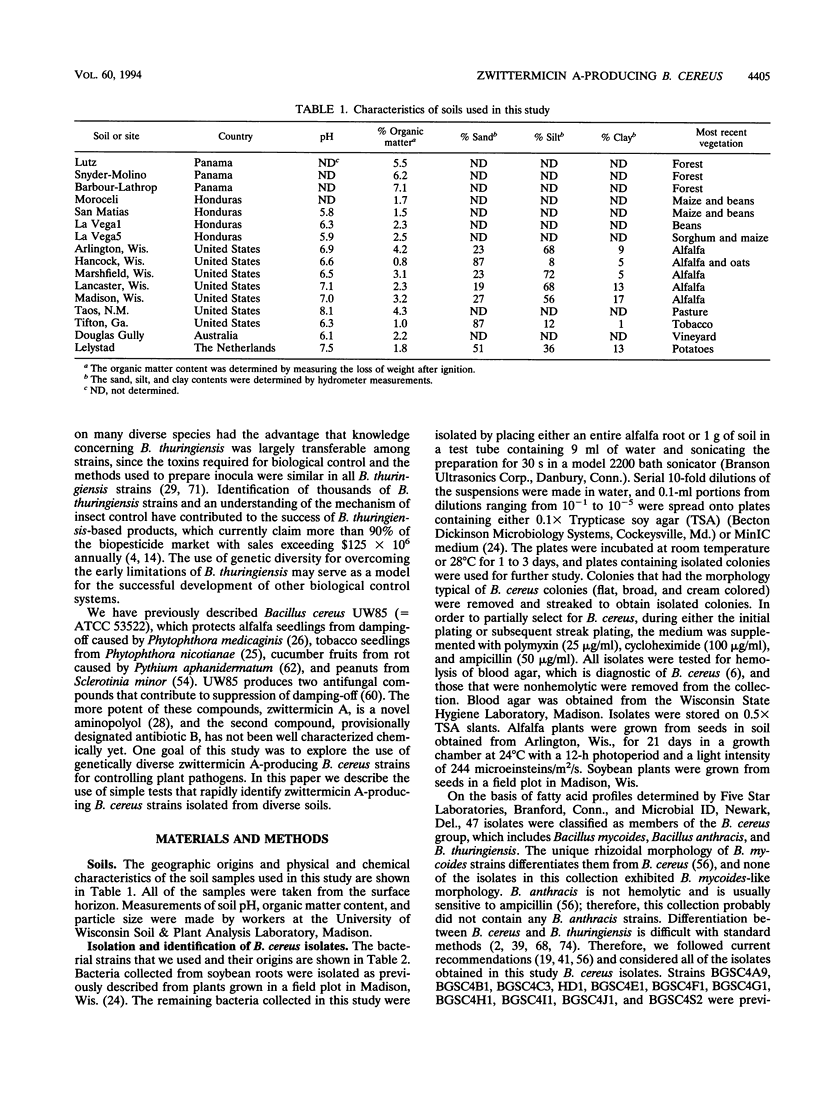
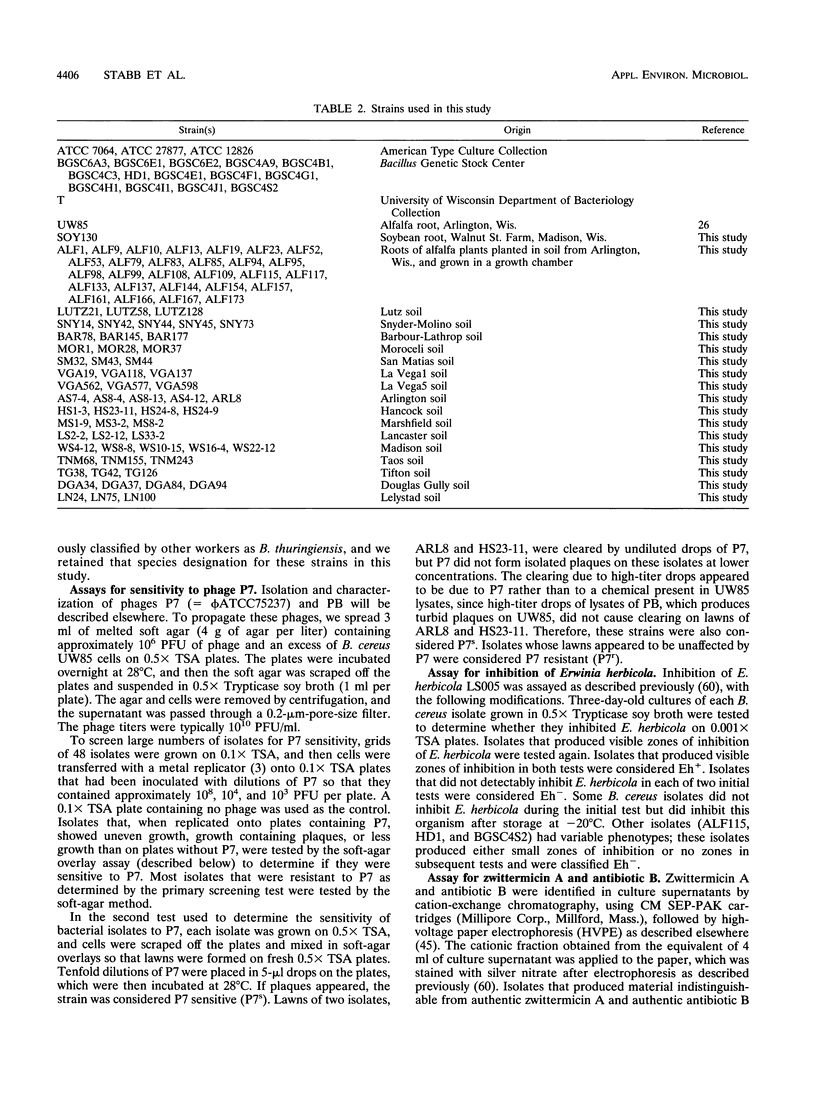
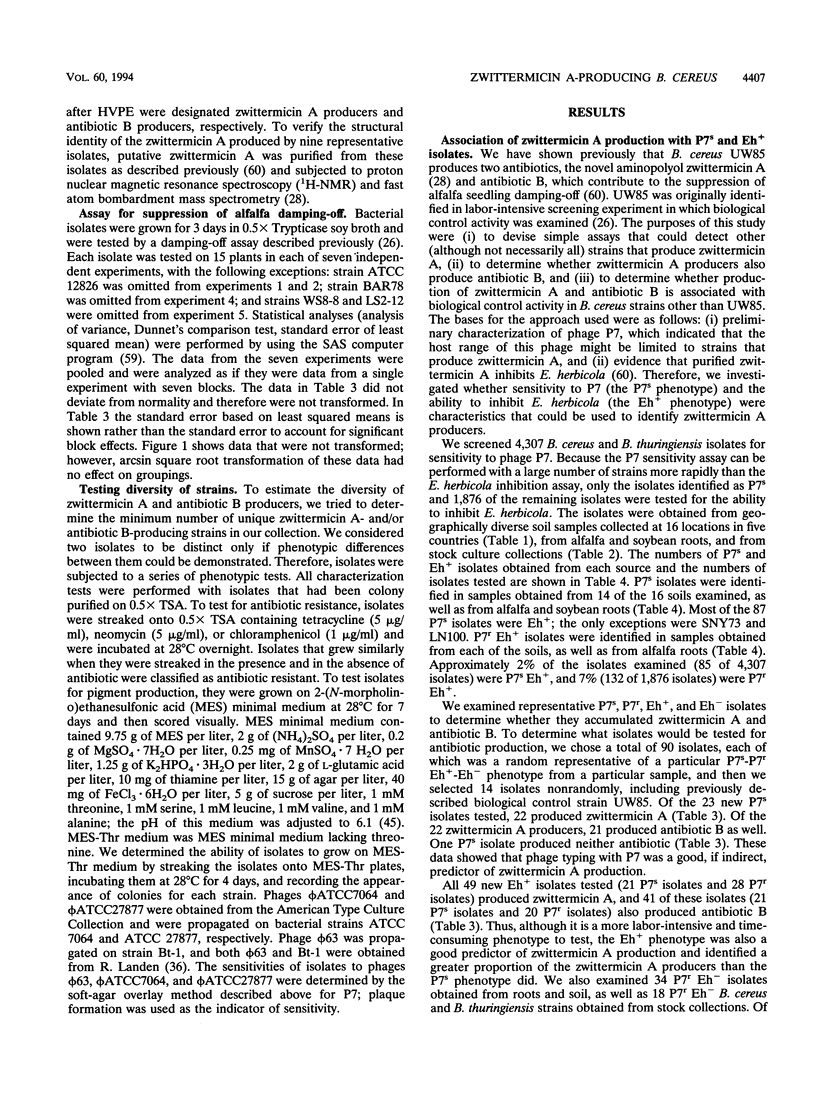
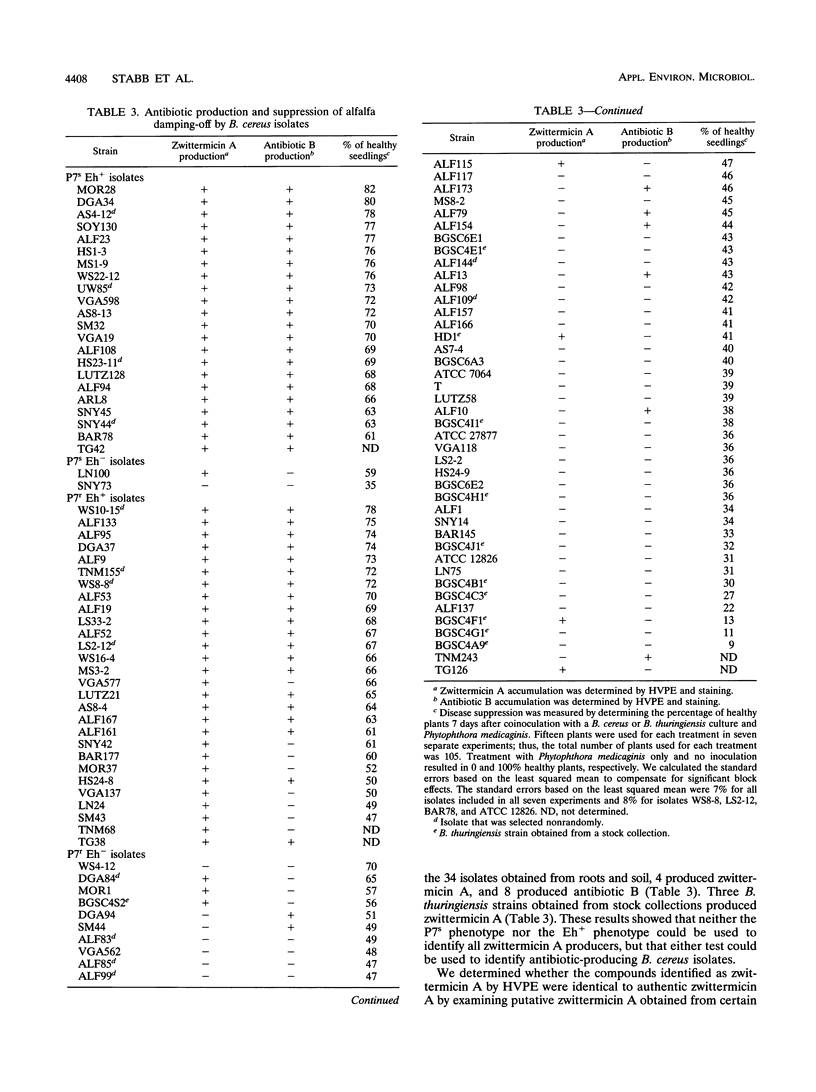
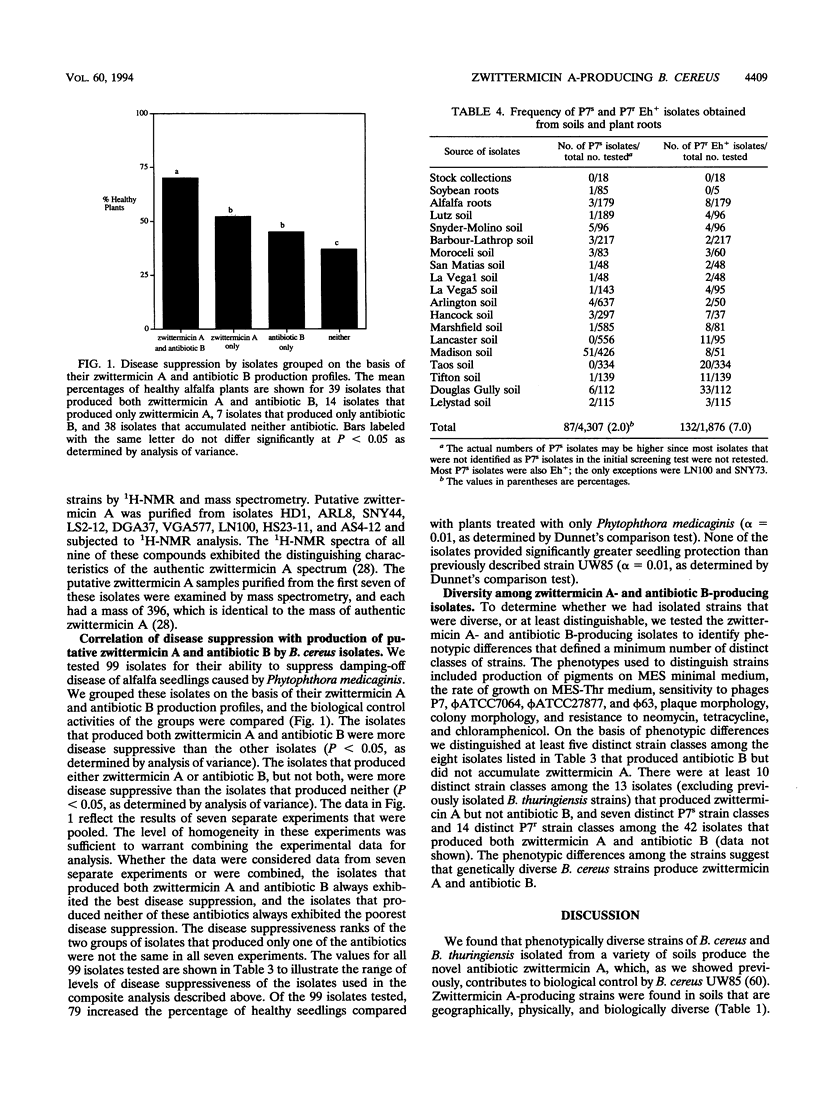
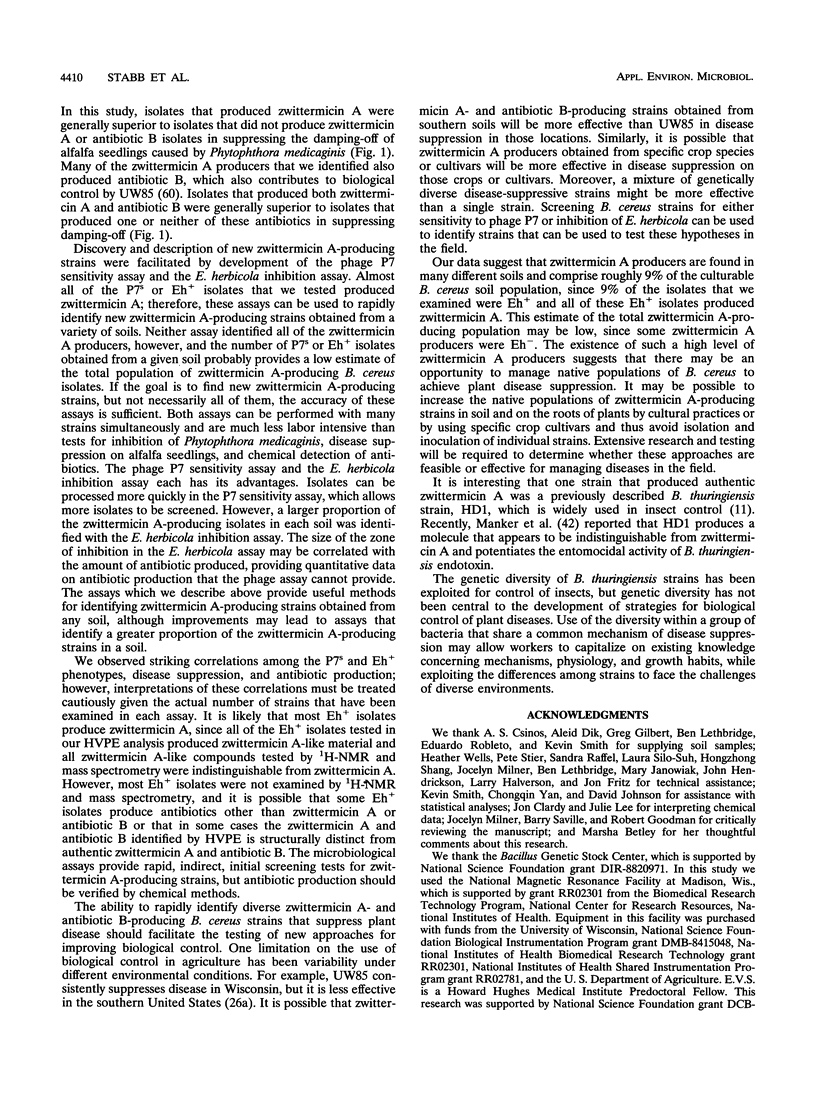
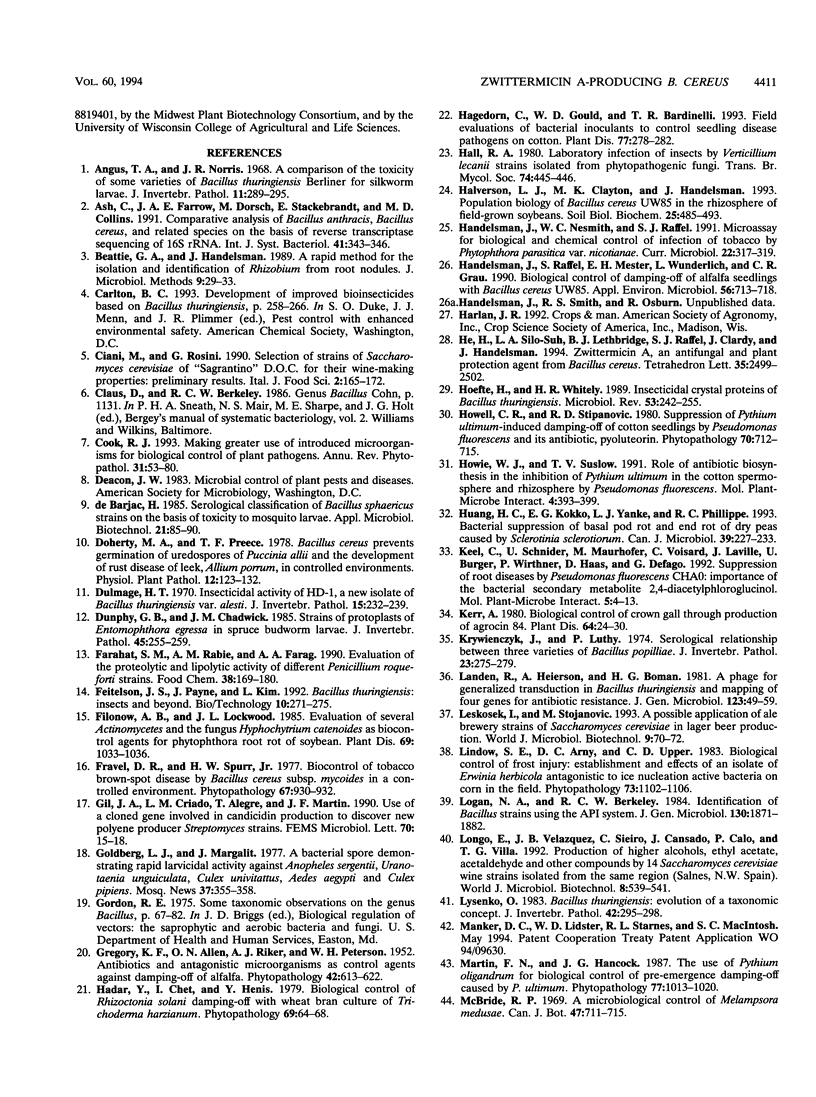
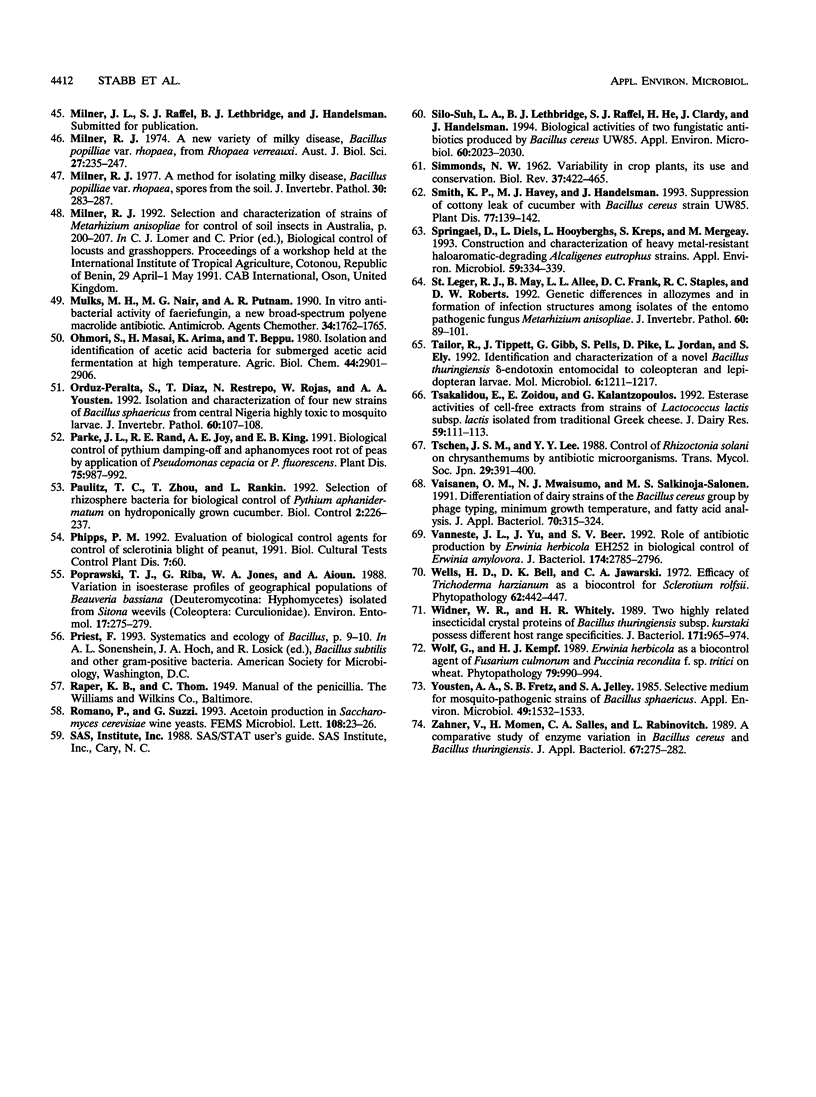
Selected References
These references are in PubMed. This may not be the complete list of references from this article.
- Ash C., Farrow J. A., Dorsch M., Stackebrandt E., Collins M. D. Comparative analysis of Bacillus anthracis, Bacillus cereus, and related species on the basis of reverse transcriptase sequencing of 16S rRNA. Int J Syst Bacteriol. 1991 Jul;41(3):343–346. doi: 10.1099/00207713-41-3-343. [DOI] [PubMed] [Google Scholar]
- Gil J. A., Criado L. M., Alegre T., Martín J. F. Use of a cloned gene involved in candicidin production to discover new polyene producer Streptomyces strains. FEMS Microbiol Lett. 1990 Jun 15;58(1):15–18. doi: 10.1016/0378-1097(90)90094-7. [DOI] [PubMed] [Google Scholar]
- Handelsman J., Raffel S., Mester E. H., Wunderlich L., Grau C. R. Biological Control of Damping-Off of Alfalfa Seedlings with Bacillus cereus UW85. Appl Environ Microbiol. 1990 Mar;56(3):713–718. doi: 10.1128/aem.56.3.713-718.1990. [DOI] [PMC free article] [PubMed] [Google Scholar]
- Höfte H., Whiteley H. R. Insecticidal crystal proteins of Bacillus thuringiensis. Microbiol Rev. 1989 Jun;53(2):242–255. doi: 10.1128/mr.53.2.242-255.1989. [DOI] [PMC free article] [PubMed] [Google Scholar]
- Logan N. A., Berkeley R. C. Identification of Bacillus strains using the API system. J Gen Microbiol. 1984 Jul;130(7):1871–1882. doi: 10.1099/00221287-130-7-1871. [DOI] [PubMed] [Google Scholar]
- Mulks M. H., Nair M. G., Putnam A. R. In vitro antibacterial activity of faeriefungin, a new broad-spectrum polyene macrolide antibiotic. Antimicrob Agents Chemother. 1990 Sep;34(9):1762–1765. doi: 10.1128/aac.34.9.1762. [DOI] [PMC free article] [PubMed] [Google Scholar]
- Orduz-Peralta S., Diaz T., Restrepo N., Rojas W., Yousten A. A. Isolation and characterization of four new strains of Bacillus sphaericus from central Nigeria highly toxic to mosquito larvae. J Invertebr Pathol. 1992 Jul;60(1):107–108. doi: 10.1016/0022-2011(92)90162-w. [DOI] [PubMed] [Google Scholar]
- Romano P., Suzzi G. Acetoin production in Saccharomyces cerevisiae wine yeasts. FEMS Microbiol Lett. 1993 Mar 15;108(1):23–26. doi: 10.1016/0378-1097(93)90481-g. [DOI] [PubMed] [Google Scholar]
- Silo-Suh L. A., Lethbridge B. J., Raffel S. J., He H., Clardy J., Handelsman J. Biological activities of two fungistatic antibiotics produced by Bacillus cereus UW85. Appl Environ Microbiol. 1994 Jun;60(6):2023–2030. doi: 10.1128/aem.60.6.2023-2030.1994. [DOI] [PMC free article] [PubMed] [Google Scholar]
- Springael D., Diels L., Hooyberghs L., Kreps S., Mergeay M. Construction and characterization of heavy metal-resistant haloaromatic-degrading Alcaligenes eutrophus strains. Appl Environ Microbiol. 1993 Jan;59(1):334–339. doi: 10.1128/aem.59.1.334-339.1993. [DOI] [PMC free article] [PubMed] [Google Scholar]
- Tailor R., Tippett J., Gibb G., Pells S., Pike D., Jordan L., Ely S. Identification and characterization of a novel Bacillus thuringiensis delta-endotoxin entomocidal to coleopteran and lepidopteran larvae. Mol Microbiol. 1992 May;6(9):1211–1217. doi: 10.1111/j.1365-2958.1992.tb01560.x. [DOI] [PubMed] [Google Scholar]
- Vanneste J. L., Yu J., Beer S. V. Role of antibiotic production by Erwinia herbicola Eh252 in biological control of Erwinia amylovora. J Bacteriol. 1992 May;174(9):2785–2796. doi: 10.1128/jb.174.9.2785-2796.1992. [DOI] [PMC free article] [PubMed] [Google Scholar]
- Väisänen O. M., Mwaisumo N. J., Salkinoja-Salonen M. S. Differentiation of dairy strains of the Bacillus cereus group by phage typing, minimum growth temperature, and fatty acid analysis. J Appl Bacteriol. 1991 Apr;70(4):315–324. doi: 10.1111/j.1365-2672.1991.tb02942.x. [DOI] [PubMed] [Google Scholar]
- Widner W. R., Whiteley H. R. Two highly related insecticidal crystal proteins of Bacillus thuringiensis subsp. kurstaki possess different host range specificities. J Bacteriol. 1989 Feb;171(2):965–974. doi: 10.1128/jb.171.2.965-974.1989. [DOI] [PMC free article] [PubMed] [Google Scholar]
- Yousten A. A., Fretz S. B., Jelley S. A. Selective Medium for Mosquito-Pathogenic Strains of Bacillus sphaericus. Appl Environ Microbiol. 1985 Jun;49(6):1532–1533. doi: 10.1128/aem.49.6.1532-1533.1985. [DOI] [PMC free article] [PubMed] [Google Scholar]
- Zahner V., Momen H., Salles C. A., Rabinovitch L. A comparative study of enzyme variation in Bacillus cereus and Bacillus thuringiensis. J Appl Bacteriol. 1989 Sep;67(3):275–282. doi: 10.1111/j.1365-2672.1989.tb02496.x. [DOI] [PubMed] [Google Scholar]


